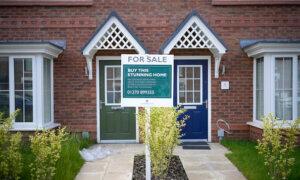Average house prices reached a record high in October, though borrowing costs continue to pose a challenge for many buyers, market data suggest.
The average property price edged up 0.2 percent last month to £293,999, exceeding the previous peak of £293,507 recorded in June 2022.
This marks the fourth consecutive month of rising house prices, even as the economic climate remains challenging, with inflationary pressures and high borrowing costs affecting buyer affordability.
Amanda Bryden, head of mortgages at Halifax, commented on the trend, noting that the recent increases in house prices reflect a period of stability following the more rapid growth seen during the COVID-19 pandemic.
“The fact that house prices have reached these heights again in the current economic climate may come as a surprise to many. But perhaps more noteworthy is that they didn’t fall very far in the first place, even amid the challenges of higher interest rates,” she said.
The rise is particularly striking given the context of subdued growth compared to the rapid 21 percent surge seen from January 2020 to mid-2022, as people sought larger homes during the “race for space” phase.
Halifax’s report shows a more moderate, steady price increase of 0.2 percent over the past two-and-a-half years, highlighting the market’s resilience despite economic pressures.
The number of new mortgages agreed recently reached its highest level in two years, Bryden said.
“This aligns with average mortgage rates dropping steadily since spring—now over 160 basis points lower than in summer 2023—coupled with continued positive income growth,” she added.
Ahead of the interest rate announcement on Thursday, economists expect the bank to cut rates more slowly than previously anticipated. This could keep mortgage costs higher for longer.
Bryden added that new government policies like higher stamp duty for second home buyers and a return to previous thresholds for first-time buyers might also affect demand.
“While we expect house prices to keep growing, it will likely be at a modest pace for the rest of this year and into next,” she said.
Regional Differences and Outlook
Across the UK, there are significant regional disparities in house price growth.October saw Northern Ireland lead with an annual increase of 10.2 percent, pushing the average property price there to £204,242. Wales also demonstrated solid growth, with a 5.6 percent year-on-year rise to an average of £225,543.
In contrast, Scotland’s housing market displayed more moderate growth, with a 1.9 percent increase bringing the typical property cost to £206,480.
Within England, the northwest experienced the strongest annual growth at 5.9 percent, reaching an average price of £235,587.
London continues to top the charts as the most expensive region, with the average property now costing £543,308, reflecting a 3.5 percent year-on-year increase.
“With more choice and buyer affordability still stretched, sellers must recognise the continued price sensitivity and price competitively to achieve a sale,” the group reported, adding that offers generally fall below the asking price.
A fourth consecutive month of positive growth shows the current strength of the housing market, said Guy Gittins, chief executive of estate agent Foxtons.
“Now that the dust has settled on last week’s autumn Budget, the outlook continues to be very positive,” Gittins added.







